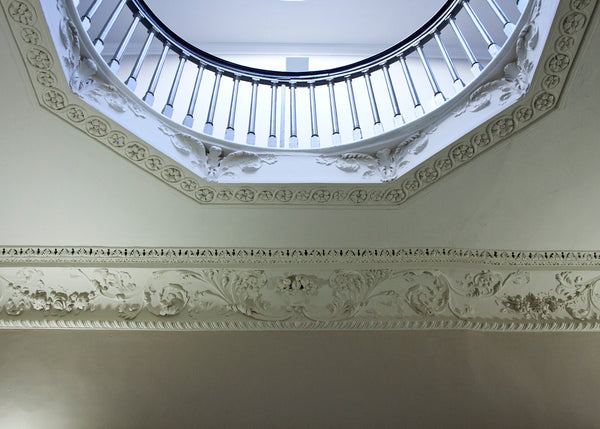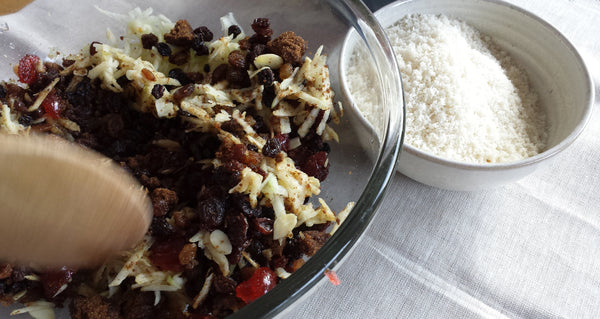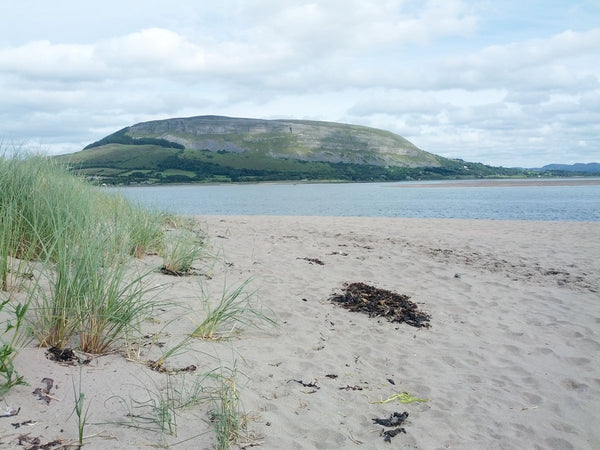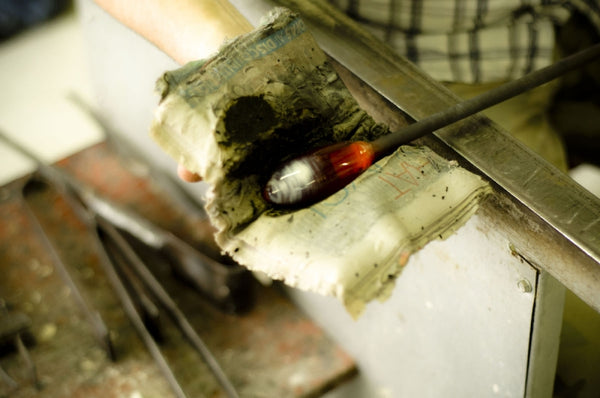Stories

City Assembly House
Posted by Anne-Marie Neligan in: City Assembly Building, dublin, Georgian, Georgian Society

Dublin’s Creative Quarter has fast become one of the most fashionable and frequented areas of Dublin city. Nestled among the independent cafes, boutiques and restaurants, in the shadows of Powerscourt Townhouse, sits the City Assembly House. Located on the corner of South William Street and Coppinger Row, the City Assembly House boasts an exciting and dynamic history. Now the headquarters for the Irish Georgian Society, we met up with the society's Executive Director, Donough Cahill to learn some more about this fascinating building.

Unoccupied since 2010, the Georgian Society took over the building in 2013 and with the help of Dublin City Council have been busy restoring the building to its original state. The ground floor, stairwell and first floor reception rooms were all completed in the first phase. Period fireplaces were installed and intricate cornicing have been lovingly restored. Donough's tour offers a wealth of knowledge on Georgian Dublin as well as providing us with a few entertaining tidbits. He told us how on first acquiring the building the entrance hall was still fitted with an ill-matched 1950's linoleum floor from when the building functioned as the Civic Museum. Beneath the lino they found an original Portland stone floor. Unfortunately the stone floor was in disrepair and had to be replaced. However, some good came of the retro lino floor and it can be now seen in the Damson Diner on South William Street... something to watch out for the next time you pop in for a cocktail!

The real highlight in this building is the exhibition room. As a result of the Georgian Society stripping back the plaster work in preparation for their next stage of renovations layers of stone work, pebble-dashed plaster and even slapdash cement rendering lie exposed. Each layer appears to tell a story and we were a little disappointed to hear this shabby chic gem will soon be covered up.
We visited the City Assembly Building during the exhibition of Susan Wood's remarkable photographs from the film sets of 1960's iconic movies Leo the Last, Easy Rider and Modesty Blaise. The exhibition in association with the Jameson Film Festival runs until February 22nd. Very aware of the City Assembly's prime location in the heart of creative Dublin, the Georgian Society are opening up the building for a variety of exhibitions, talks and tours. We highly recommend you pop-in for a look for yourself. The building can also be viewed by appointment when there aren't any exhibitions running.
A full listing of future events can be found on the Irish Georgian Society website www.igs.ie
Post compiled by Anne-Marie Neligan & Katie Gilligan

The Christmas Pudding
Posted by Laura Caffrey in: Christmas, food, ireland, traditions

The Christmas pudding recipe, held in the highest regard in every Irish household, is passed down through generations with a sense of pride and respect.
This year, my mother passed on my Granny's cherished recipe to me. On a crisp Autumnal Sunday, we made two puddings, the one we will serve on Christmas Day and a small pudding which we will have in early December referred to as 'The Kitten'.

Once all the ingredients are added, the mix is left to rest overnight in the mixing bowl, under a tea towel allowing the dried fruits to absorb the alcohol. Whereas my Great Gran would have boiled the pudding in a cloth bag, nowadays, we cook the pudding in a bowl immersed in a tray of water for approx 6 hours. Following a second cooking on Christmas day, the pudding is topped out and served as the finale to the Christmas meal
Each family's recipe is generally inherited with individual customs and traditions, so instead of divulging my family's recipe, I thought I would focus instead on a brief history of this yummy festive dessert.
Originating in medieval England, the Christmas pudding is also known as plum pudding, referring to the Victorian use of the word 'plum' as a term for raisins. Traditionally made up of 13 ingredients (representing Christ and the 12 Apostles) including dried fruit, breadcrumbs, whiskey, stout, suet and spices. This sweet pudding recipe replaced the original savoury recipe containing poultry, pheasant, rabbit and partridge in the 17th century.
Common customs associated with this pudding include each member of the household stirring the mix while making a wish. It is also common to include tokens such as coins (to bring wealth in the coming year).
Due to its high alcohol content, the pudding does not spoil and can keep for up to a year. Some households produce a second pudding to be consumed at Easter.
In my family, the pudding does not see St.Stephens day, let alone Easter. Each year we will declare how successful or unsuccessful the pudding is. Needless to say the successful years have outweighed the unsuccessful ones. No doubt my time will come to prepare the Christmas pudding to the family recipe, but for the moment, I'm happy to let my Mum take full responsibility, allowing me to enjoy my favourite festive dessert.
I like mine served with custard, to my Granny's recipe of course.
Blog post by: Clare Grennan


Merrion Square Expedition
Posted by Anne-Marie Neligan in: Christmas, dublin, ireland, Merrion Square

With Christmas fast approaching the team at Irish Design Shop, in conjunction with the Merrion Square Network are busy organising another year of Christmas on the Square. The event now in its second year will showcase some Ireland's top designers, makers and artisan food producers along with a variety of other treats in three of the Merrion Square most prestigious buildings. As myself and Katie are new to the IDS team so we set off to investigate these beautiful buildings in the heart of Georgian Dublin for ourselves. Here's a taster of some of the delights we found.
Our first stop was 45 Merrion Square, the headquarters of The Architectural Archive of Ireland. Built in 1795 and the largest terraced house on the square it makes quite an impression. The Archive collect and preserve material of every kind relating to the architecture of the entire island of Ireland, and make it available to the public. Through the massive front door and into a impressive foyer displaying architectural models . Beyond the foyer and onto the Archive Reading Rooms and Architecture Gallery, which will host cocktail making by our sponsors at Hennessy. Up the stairs to the piana nobile, a trio of connecting rooms with high ceilings, panelled walls, cornicing and grand fireplaces. These rooms will house our 22 craft stalls for the day and will be festively decorated by our neighbours, Appassionata.

Next stop was 22 Merrion Square, The College of Anaesthetists Ireland. Today the building is regraded as a leading training body in the field of anaesthesia, intensive care and pain medicine, but we have something else in mind for the day. Denise Johnston, guided us to the first floor Gilamartin Room, a room of old-school grandeur and where the ICA will perform cake decorating demonstrations on the day. Down the stylish wooden staircase, lit with florescent lights, lies a stylish marble floored basement room in stark juxtaposition to the grandeur of above. This airy contemporary space will be home to our 10 artisan food producers. Tasty treats will be available for the likes of Cocoa Atelier, Hansel and Gretel bakery and The Scullery.
Our last stop was across the park to 63 Merrion Square, The Royal Society of Antiquaries and I really felt we left the best for last. This building hasn't been restored to the level of the others and this added to it's charm. Mounted in the entrance hall is a massive stags head. From the intricate moulding ceiling hangs a simple Georgian lantern. The meeting rooms situated on the first floor, overlook Merrion Square to the front and a restored Georgian garden to the rear. Their marble fireplaces, elaborate ceiling decorations and tall, shuttered windows all reflect their former status as the main reception spaces of the house. We plan to house a pop-up café from our friends and neighbours Coppa, from the R.H.A Gallery, in these rooms lined with books and journals on Irish history, antiquities and archaeological published in Ireland, Great Britain and beyond.

Join us on November 30th for a day of festive fun. Whether you are looking to get all those Christmas gifts out of the way early or a chance to explore Georgian Dublin's hidden gems, Christmas on the Square has it all.
Blog post by: Anne-Marie Nelligan and Katie Gilligan

A trip West
Posted by Laura Caffrey in: food, ireland, Makers, sligo

Back in August 2013 team Irish Design Shop decided to head west for a bit of an adventure. After a quick trip to Westport to try out the infamous Greenway route on our bikes, we headed north to Co. Sligo.
It was in Strandhill where we set down to visit the lovely folk at Shell’s café. Facing the amazing beach, which is the perfect haven for surfing enthusiasts, Shells not only serves up the most delicious food all day long, but also houses a small gift shop selling everything from homemade brown bread to hand-made jewellery and homewares.
Jane and Myles opened Shells back in March 2010 having travelled the world to find the ideal spot to settle down, with the goal to create a special place for people to come and eat simple hearty food after a long day on the waves. On arrival to Strandhill you may also pass their beautiful home which is an extended old cottage, with concrete floor and countertops, the kitchen is really at the centre of this small but perfectly formed home. We were lucky enough to be invited to a small barbeque with a wonderfully diverse guest list. It was there that we met the owners of Voya Seaweed baths.

The highlight of the trip was a hike up Knocknarea mountain to see the burial mound of the legendary Queen Maeve. For those of you who don’t know the the story behind this celtic queen allow me to give you a brief outline:
There is the mythological Queen Maeve and a real counterpart whose stories appear to overlap. The real-life Meave was a very ambitious woman, born in Rathcroghan Co. Roscommon, daughter of the King of Connacht. When her father died and her sister Clothra was named Queen she murder her pregnant sister in order to take the throne by force. Maeve married several times, most famously to Conor, King of Ulster, and apparently lived to 120 when she was eventually murdered by her sister’s son. Her legend was used to inspire warriors through the ages, when women were allowed to partake in battles.
When we visited the cairn up on Knocknarea a creepy dense mist came in from the sea (the ghost of Queen Maeve perhaps?!)

The final morning of our trip we paid a visit to the aforementioned Voya seaweed baths to rid our bodies of all of the alcohol related toxins we had forced upon ourselves. Not knowing what to expect from it at all, I was totally amazed, and really can't recommend it enough!
On the route home we dropped in to visit Elizabeth who makes the amazing “Salt of the Earth” plywood jewellery we sell in store. She is currently “minding” in her (architect) uncle’s incredible home just outside Strandhill, with the most amazing views of the beach. You couldnt choose a more inspiring spot to create from.
One more stop before the long journey back to Dublin. We called in to Matt Jones, woodturner in the sleepy village of Riverstown, to have a nose around and pick up an order of twig pots. Matt has his home and workshop just behind the local parish hall. The workshop is kitted out with a variety of wood-turning lathes and chisels that we spent the afternoon coveting. Here he creates the most incredible hand turned bowls and vessels.
Our highlights and tips for a trip West:
- A cycle along the Greenway (we went from Mulranny to Achill)
- A hike up Knocknarea to see Queen Maeve’s tomb.
- Visit Dolly’s cottage (a 200 yr old preserved thatched cottage)
- Dinner or Brunch in Shell’s café (we tried both).
- Take a seaweed bath at Voya
- Surfing in Strandhill of course!

Irish Handmade Glass Company
Posted by Clare Grennan in: Makers

‘Holi...what?’
‘Holibops Manuel, it’s a Dublin term meaning holidays’.
Indeed Manuel (our photography intern from Spain) learned a few more Dublin terms as we made our way through the sea of green that was Dolphins Barn pre Euro 2012 on our one day holibop to Waterford.
Back in January, we approached the Irish Handmade Glass Company about producing a range of glassware exclusive to our shop. Simple forms in beautiful colours was the brief. The results were exactly that, so we were feeling pretty excited about visiting the studio that produced our range having previously only communicated via email. The perfect opportunity to visit coincided with Manuel’s internship with us, so off we went, struggling at times with communication, but I think we all learnt a thing or two on that car journey. Manuel learnt some new words and we learnt that all pints are €2 in Dicey’s every Tuesday!

The Irish Handmade Glass studio is based in the heart of the medieval city of Waterford, a stones throw away from the Disneylandesque Waterford Crystal visitor centre. On arrival, we felt immediately welcome by the lads despite the fact that we were totally in the way as master glass blower Richard Rowe attempted to work around our awkward decamping of bags and coats. Manuel got straight to work while we made chit chat with master glass maker Tony Hayes.

The company consists of three major glassmakers and one master glasscutter, all ex-Waterford crystal empolyees who have a combined experience of 130 years of glass making. Each skilled worker, glide with ease, poles of molten glass in hand around the workshop in a relaxed yet orderly manner, producing finely crafted pieces at a factory line pace. The pride and enthusiasm that these makers display for their craft is a pleasure to see.
Established in 2009, they are obviously relishing the opportunity to run a business which they have full control over. Emphasis is on the quality of glassware which is produced from non-lead based crystal, melted from its pellet form in a purpose built kiln. Molten glass is either blown at this stage or dipped in high quality pigment to produce vibrantly coloured pieces. Once blown pieces are cooled, they are then passed to master cutter Danny Murphy who cuts and finishes each piece with steely concentration. Intrigued by the various stages of manufacturing, we began thinking up all sorts of possibilities. It has been such a pleasure working with this glass company that we would like to see this as the beginning of a whole host of possible products.
As we packed up our things, we left with the thought, just think of the possible Christmas baubles!
Special thanks to all at the Irish Handmade Glass Company: Danny Murphy, Derek Smith, Tony Hayes & Richard Rowe.
HUGE thanks to Manuel Gutiérrez for taking such amazing photos.



